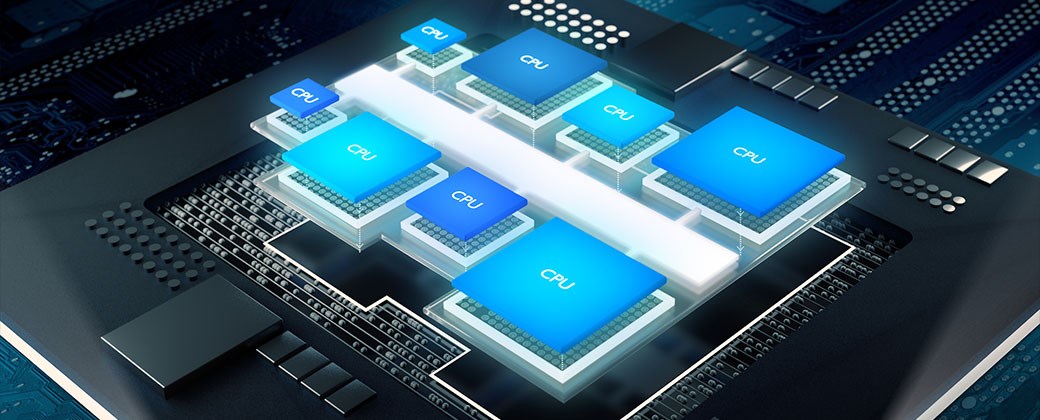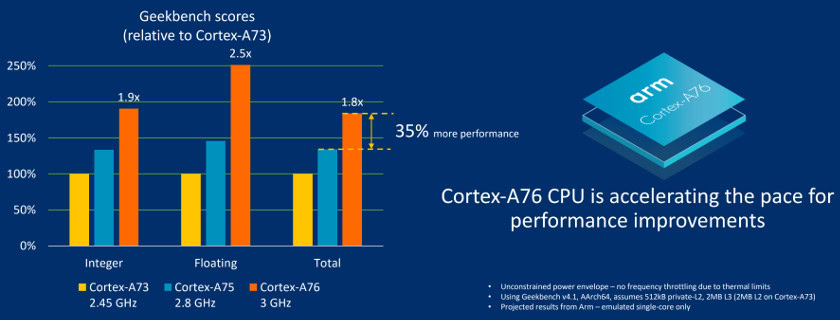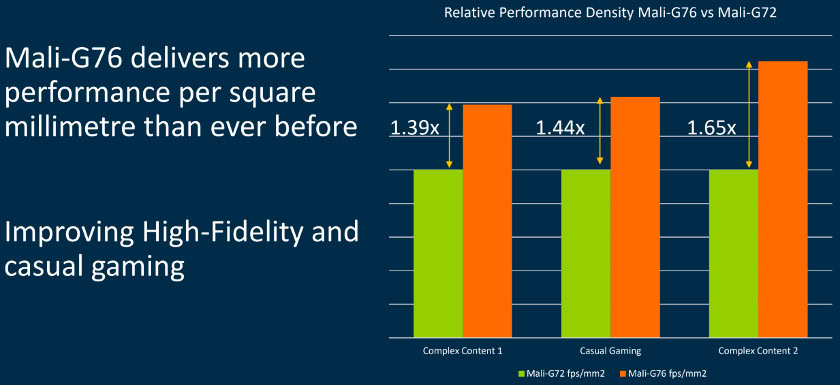Affiliate links on Android Authority may earn us a commission. Learn more.
New Arm Cortex-A76 and Mali-G76 target laptop-class performance
You probably haven’t complained about high-end smartphone performance for a while now, but processors can always be a bit faster and, more importantly, power efficient. To that end, Arm just announced its latest products destined for future smartphone SoCs. These announcements are aimed squarely at the high performance end of the market, ranging from smartphones up to laptop-class capabilities.

The latest additions to Arm’s portfolio are its Cortex-A76 CPU, Mali-G76 GPU, and Mali-V76 video processor for ultra-high resolution displays. As the names suggest, the Cortex-A76 is a replacement for the high-performance Cortex-A75 core unveiled last year, the new Mali-G76 takes over from the G72, and the Mali-V76 is the new high-end option, replacing the V52 and V61. There’s no new LITTLE CPU core announcement this year, so we’ll be sticking with the Cortex-A55 for a while longer.
A ground-up CPU redesign
Despite the seemingly minor change to Arm’s CPU nomenclature, the Cortex-A76 is very different from the A75. It’s a completely new high-performance microarchitecture design made from scratch by Arm to target higher performance points than ever before. Laptop-class was the term used during our briefing with Arm, but the flexible nature of the design means there’s plenty of performance gains up for grabs in a smartphone form factor too.
The headline figure is up to a 200 percent performance gain compared to the current crop of laptop form factor products powered by the Cortex-A73. Compared to the last generation A75 the gains are a little smaller, but still notable. The biggest improvements are for machine learning applications, with up to a 400-percent boost thanks to optimized dot product instructions. A 7nm A76 running at 3GHz improves performance by around 35 percent over a 10nm A75 running at 2.8GHz.

On top of that, Arm is boasting a 40-percent improvement in energy efficiency. Some of that obviously comes from the smaller target process node, but the microarchitecture changes are making a difference too. The Cortex-A76 has also been designed so a single core can run flat out indefinitely, while frequency throttling should only kick in for 3 or 4 core cluster configurations in thermal and power constrained products like smartphones. That means more consistent high-end performance for demanding workloads.
The Cortex-A76 is still based on Arm’s DynamIQ cluster technology, meaning you’ll see it paired up with the smaller power-efficient Cortex-A55 inside heterogeneous CPU clusters. A 4+4 design is still the likely layout for high-performance products, while 2+6 and 1+7 offer the best performance-to-cost benefits for cheaper SoCs.
Next-generation graphics and video
The Arm Mali-G76 has next-gen SoCs covered for improved graphics performance. It’s based on the same Bifrost architecture as the G72 and G52, offering a major 1.5x performance boost with this generation at 7nm.
Arm has achieved much of this performance boost by doubling up the number of execution pipelines within each core’s engine, which offers roughly double the FP32 and FMA throughput with only a 28-percent increase in area. This means each G76 graphics core is now roughly twice as powerful as in the G72, so chip designers won’t need to include so many to achieve the same performance level as before. This is the same optimization the company made inside its Mali-G52 earlier this year, and the same Int8 dot product support for machine learning applications makes its way across to the high-end processor now as well.
Each Mali-G76 core can be up to twice as powerful as in the G72, so a new MP8 configuration will be roughly as powerful as an old MP16.
On top of the performance gains, the G76 boasts a 30 percent improvement to energy and area efficiency when built on the same process node. Moving down to 7nm will see further performance gains. This can be used to extend battery life for the same performance as the last generation or be put towards a higher core count for additional graphics grunt.
The Mali-G76 can be configured for between four and 20 cores, down from the 32 maximum core count with the G72. Arm expects that we’ll see smartphones core counts in the low teens, with higher numbers reserved for products with larger battery capacities and where thermal constraints are less of a factor, such as laptops. The Mali-G52 fills in the gap for lower end products with smaller core counts between one and four.

The last announcement is a new vision processor, the Mali-V76, designed for high-resolution displays. The design caters for up to 8k60 decode and 8k30 encode, as well as multiple 4K and 1080p streams for video walls. It essentially doubles up the performance and capabilities of the Mali-V61. This is certainly overkill for smartphone display resolutions, but will likely find a home in future high-end TVs and higher resolution AR & VR headsets.
Wrap up

Arm latest CPU, GPU, and VPU designs will offer some serious next-generation performance and energy improvements for mobile devices. Don’t forget, it’s got new machine learning hardware heading our way under the Project Trillium banner too.
We’ll have to wait for Arm’s partners to pick up these latest components before they hit consumer products. The Mali-G76 is available for sampling already and could appear in SoCs before the end of the year. We’ll have to wait a little longer for our first Cortex-A76 devices — they’ll probably be announced in chipsets this year but likely won’t ship in products until 2019.
We’ll dive deeper into the CPU and GPU architectural changes heading our way and what they mean for performance gains in more detail this week, so stay tuned.